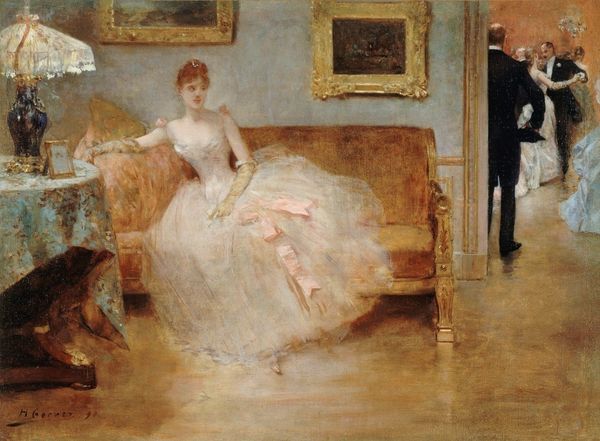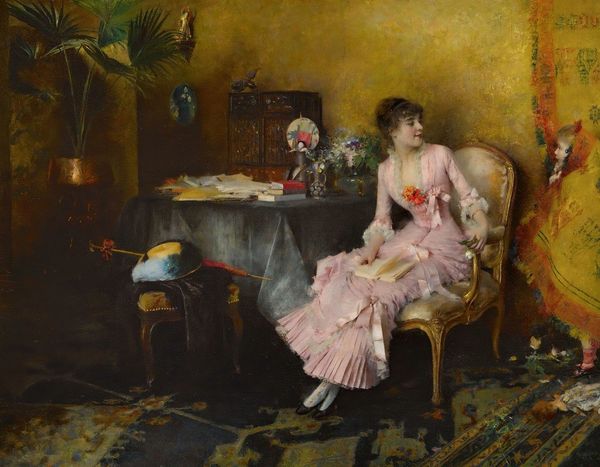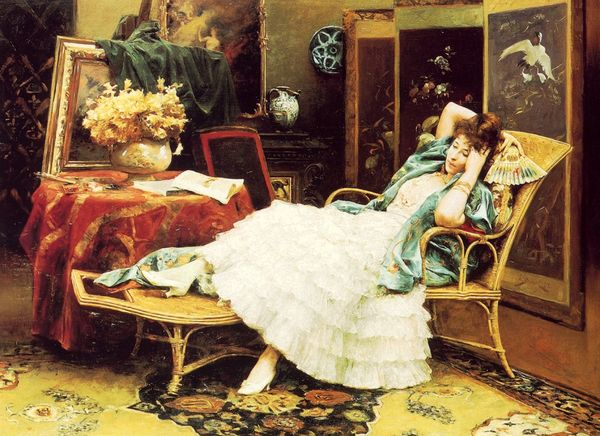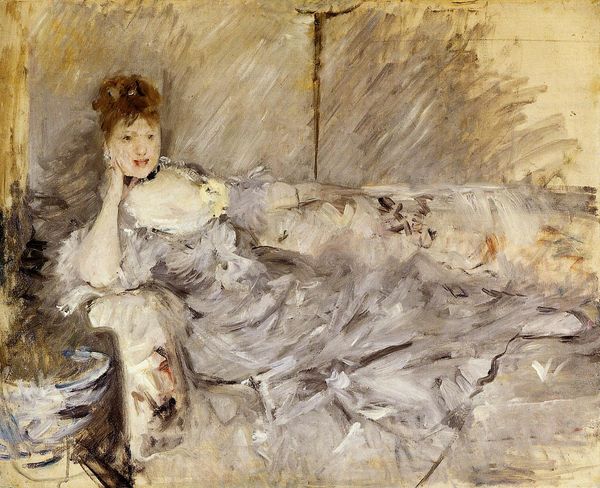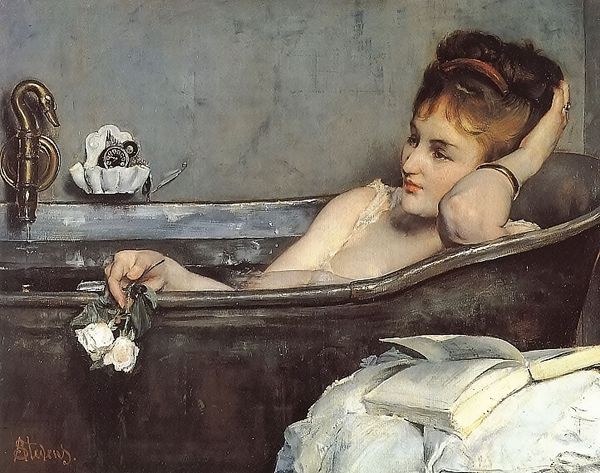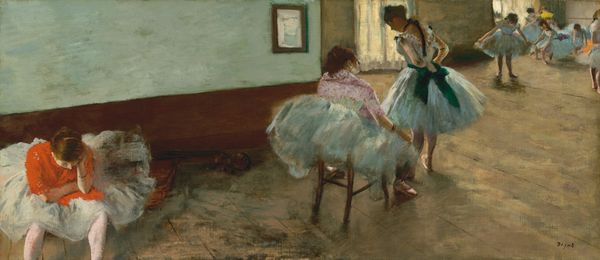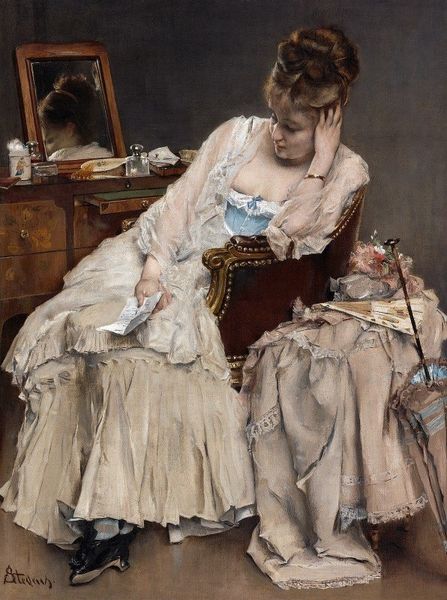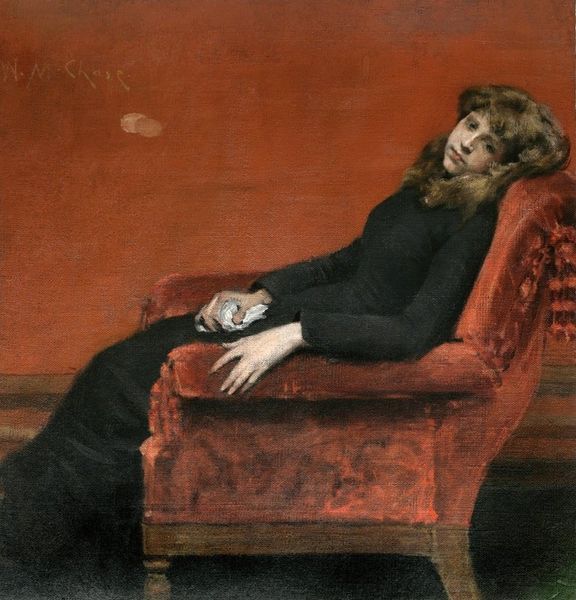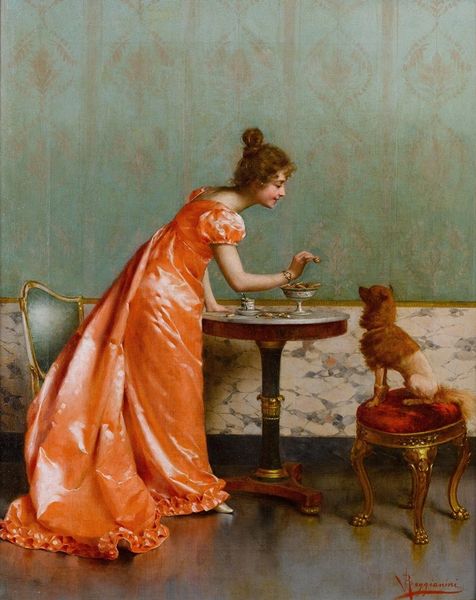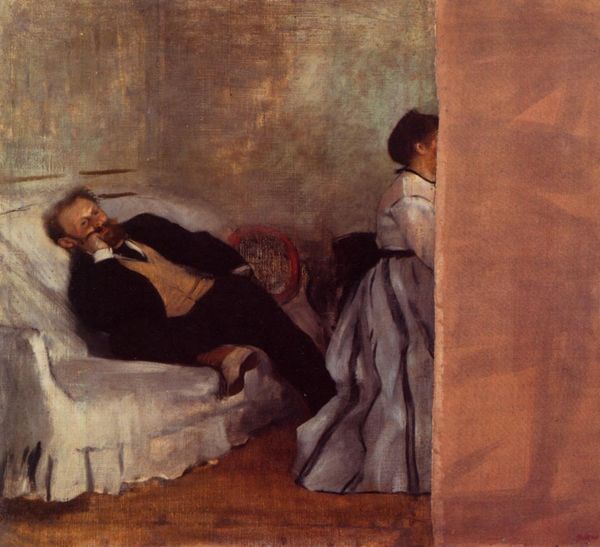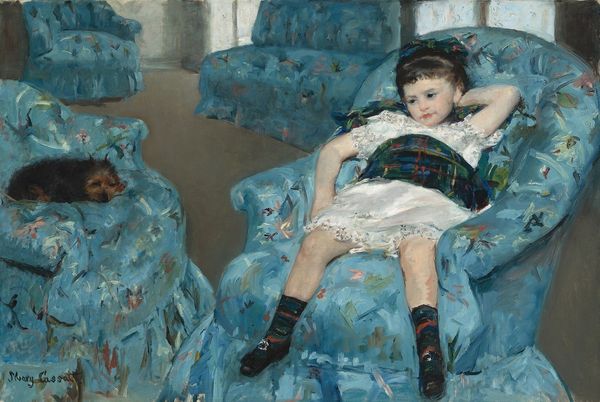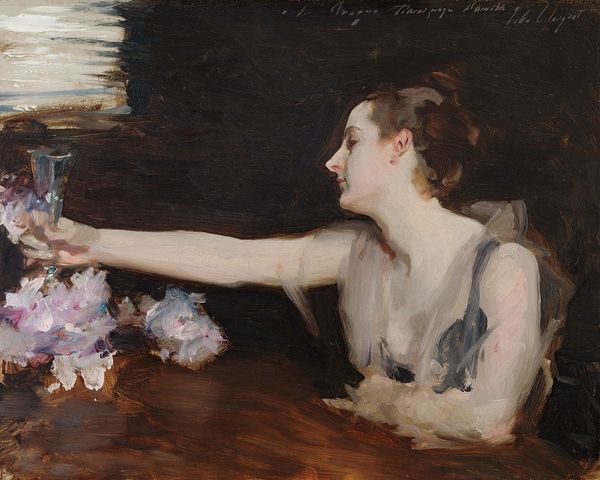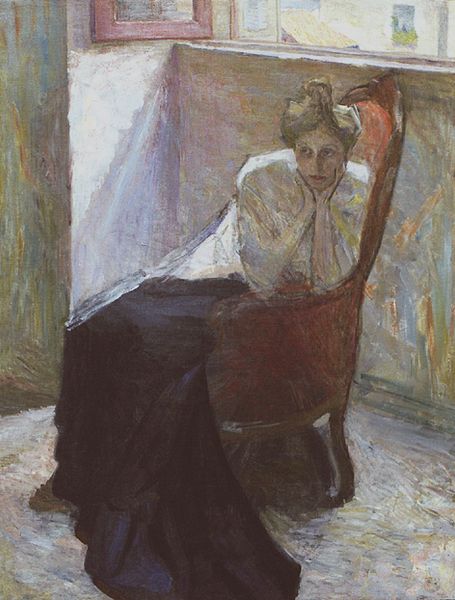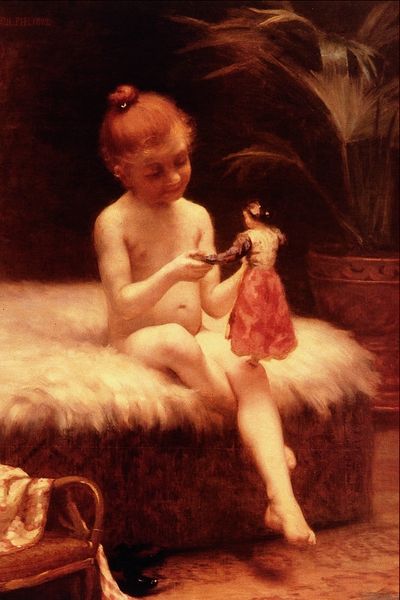
painting, oil-paint
#
portrait
#
gouache
#
painting
#
impressionism
#
oil-paint
#
figuration
#
intimism
#
genre-painting
#
watercolor
#
realism
Copyright: Public domain
Curator: Ah, this image evokes such a tender feeling, doesn’t it? We're looking at "Dancing Shoes" created in 1882 by Helene Schjerfbeck. Editor: Immediately, I notice the subtle variations in tonality—a limited palette predominantly using muted greens and grays that imbue a sense of melancholy. It feels both intimate and distant, somehow. Curator: Indeed. Intimacy is key here, especially regarding societal expectations. Schjerfbeck, during a time when female artists were often constrained, represents a young girl, not in active dance, but in a quiet moment of preparation, symbolizing a liminal stage. Editor: And the composition really underscores that. The figure isn’t centered, drawing your attention to the surrounding space—those potted plants in the background, the richly patterned carpet… all elements that create a kind of quiet domestic theatre. It’s almost asymmetrical but deliberately so. Curator: I find the single slipper, abandoned near her feet, is particularly compelling. It can be seen to represent a loss of innocence, that childhood dream teetering at the precipice of maturation. It mirrors a broader social narrative: what expectations lay ahead for girls and women? Editor: Right, but from a purely formal angle, notice how that stark white slipper catches the light—almost like a highlight in the painting—directing your gaze and echoing the white frills of her tutu. It’s a focal point that both anchors and propels the visual narrative. Curator: It makes one wonder about the pressures associated with performance and display. We see a child’s solemn ritual; one perhaps marked by anxiety but undoubtedly laced with expectation and hope. Those symbols resonate even now. Editor: I agree. Looking at the subtle brushstrokes, the blending of colors, it captures a specific moment, one which reflects both societal narratives and also stands alone as a beautiful example of the artist's capacity for evoking feeling using form. Curator: A sentiment that stands the test of time, truly, even today when exploring the echoes of historical social constraints upon self-expression. Editor: Precisely. And I think anyone can appreciate Schjerfbeck’s sophisticated use of colour and composition.
Comments
No comments
Be the first to comment and join the conversation on the ultimate creative platform.
